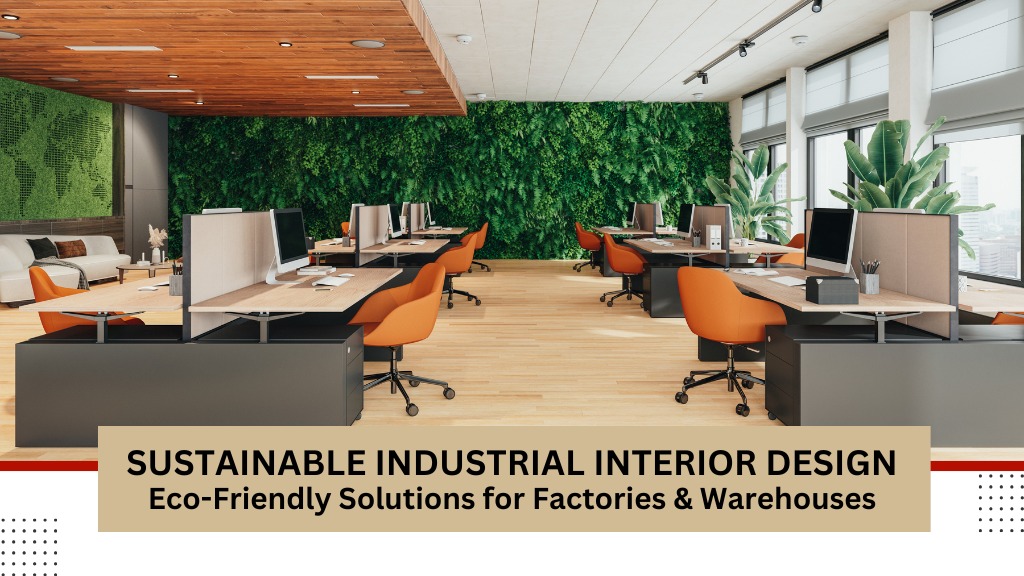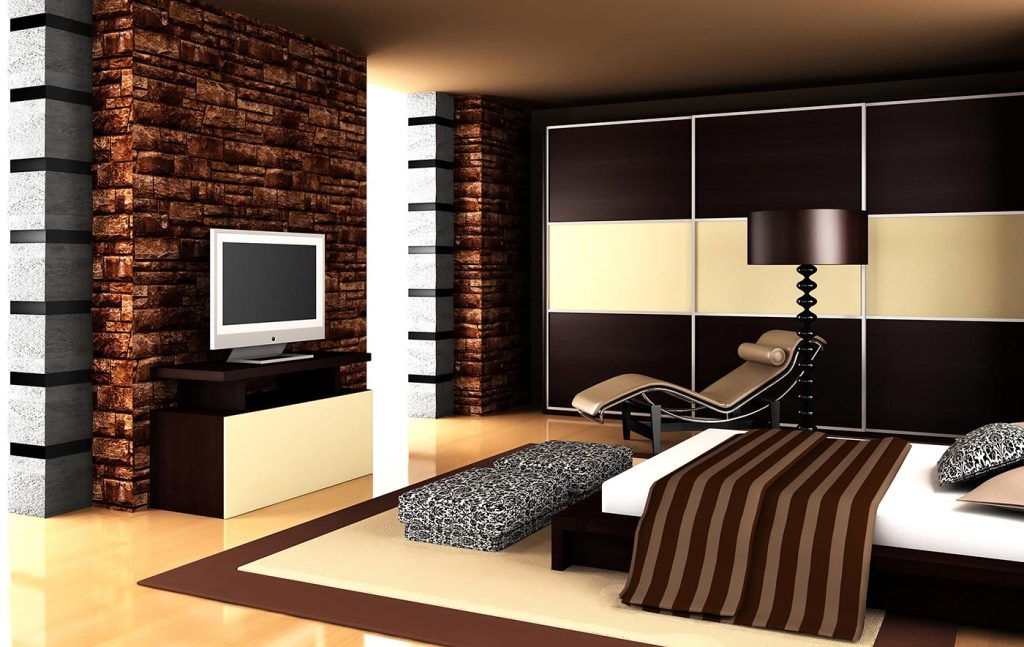As industries evolve, sustainability is becoming a core focus in every sector, including interior design. Sustainable industrial interior design is all about integrating eco-friendly materials, energy-efficient systems, and innovative designs that reduce environmental impact while maintaining productivity. Factories and warehouses, which are often energy-intensive spaces, can greatly benefit from sustainable design solutions that enhance efficiency, reduce costs, and create healthier work environments.
In this blog, we will explore key eco-friendly solutions for industrial spaces and how they can transform factories and warehouses into greener, more efficient workplaces.
Why Sustainability Matters in Industrial Interior Design?
Factories and warehouses are traditionally known for their high energy consumption, excessive material use, and significant waste generation. However, the shift toward sustainability is no longer just a trend—it is a necessity. Implementing sustainable industrial interior design not only helps businesses meet environmental regulations but also reduces operational costs and improves employee well-being.
By choosing sustainable design solutions, industries can:
✅ Reduce energy consumption
✅ Minimize waste and pollution
✅ Improve indoor air quality
✅ Lower long-term maintenance costs
✅ Enhance brand reputation for sustainability
Eco-Friendly Solutions for Sustainable Industrial Interior Design

1. Energy-Efficient Lighting Solutions
Lighting is one of the largest energy consumers in industrial spaces. Switching to LED lighting can significantly reduce energy consumption and maintenance costs. Additionally, incorporating natural lighting through skylights, glass panels, and strategically placed windows can enhance illumination while reducing the need for artificial lights during the day.
🔹 Smart Lighting Systems: Motion sensors and automatic dimming can optimize lighting usage based on real-time needs.
🔹 Solar-Powered Lighting: Utilizing solar panels for energy generation can further enhance sustainability efforts.
2. Use of Recycled and Sustainable Materials
Choosing eco-friendly materials in industrial interior design reduces the environmental impact of construction and renovation. Some sustainable options include:
🌱 Recycled Metal and Wood: Repurposed steel, reclaimed wood, and bamboo offer durability while reducing the demand for new raw materials.
🌱 Low-VOC Paints & Finishes: Using low-VOC (Volatile Organic Compounds) paints improves indoor air quality and minimizes harmful emissions.
🌱 Eco-Friendly Flooring: Options like polished concrete, recycled tiles, and cork flooring offer sustainability without compromising durability.
3. Smart Ventilation & Air Quality Systems
Factories and warehouses often struggle with air quality issues due to dust, fumes, and chemical exposure. Sustainable ventilation solutions ensure cleaner air and a healthier workspace.
🌬️ Energy Recovery Ventilation (ERV) Systems: These systems recycle indoor air while maintaining temperature control, reducing the load on HVAC systems.
🌬️ Indoor Greenery & Living Walls: Plants naturally improve air quality by absorbing pollutants and providing oxygen.
4. Water Conservation & Management
Industrial spaces consume vast amounts of water for production, cooling, and sanitation. Implementing water-saving techniques helps reduce waste and operational costs.
💧 Rainwater Harvesting: Capturing and reusing rainwater for cleaning, cooling, and irrigation.
💧 Low-Flow Fixtures: Installing low-flow toilets, faucets, and sensor-based water dispensers minimizes water wastage.
💧 Greywater Recycling: Treating and reusing wastewater for non-potable applications.
5. Optimized Space Utilization & Modular Design
Smart space planning ensures better workflow efficiency while reducing material waste. Modular and adaptable designs allow factories and warehouses to be reconfigured without unnecessary construction.
🛠️ Multi-Purpose Furniture & Storage Solutions: Using modular workstations and stackable storage optimizes space.
🛠️ Vertical Storage & Mezzanine Floors: Maximizing vertical space reduces the overall footprint and enhances efficiency.
6. Renewable Energy Integration
Shifting towards renewable energy sources is a game-changer for industrial spaces. Installing solar panels, wind turbines, or geothermal systems can significantly reduce reliance on fossil fuels and lower electricity bills.
⚡ On-Site Renewable Energy: Investing in solar roofing solutions can provide long-term cost savings.
⚡ Battery Storage Systems: Storing excess energy ensures continuous operations even during power outages.
7. Waste Reduction & Recycling Programs
Industrial operations generate a lot of waste, from packaging materials to obsolete equipment. Implementing waste management programs can significantly lower environmental impact.
♻️ On-Site Recycling Stations: Encouraging waste segregation and proper disposal.
♻️ Upcycling Industrial Waste: Reusing manufacturing byproducts to create new materials.
The Future of Sustainable Industrial Interior Design
As industries continue to grow, so does the responsibility to build and operate in an eco-friendly manner. The future of sustainable industrial interior design will focus on advanced energy-efficient technologies, AI-driven automation, and circular economy practices where materials are continuously reused and repurposed.
Sree Craft: Your Partner in Sustainable Industrial Interior Design
At Sree Craft, we believe in designing industrial spaces that are functional, efficient, and eco-friendly. Our expertise in sustainable industrial interior design ensures that your factory or warehouse is not only aesthetically appealing but also aligned with modern sustainability standards.
🌿 Ready to transform your industrial space into a greener, more efficient environment? Explore our eco-friendly solutions today! 🚀



